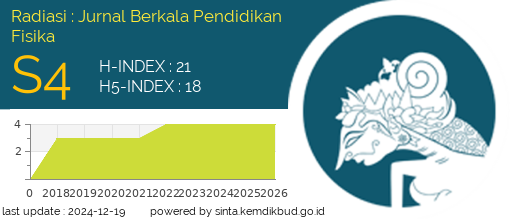Pengembangan Instrumen Penilaian Afektif Pada Asisten Praktikum Laboratorium Fisika
Abstract
This study aims to develop affective assessment instruments for practical assistants in physics laboratories. The development model used Plomp development model, consisting of five stages, namely: (1) the initial investigation stage; (2) Design; (3) Realization / construction stage; (4) testing, evaluation and revision; (5) implementation. The questionnaire is prepared based on theory and proven by its relevance (content validation) by experts. Collecting data in this study using non-test data collection techniques in the form of affective / attitude questionnaires. The affective score obtained will be analyzed the validity of the instrument construct using the analysis rash model theory with the winsteps program. Reliability using Alpha Cronbach. The attitude instrument was designed with reference to the criteria and indicators based on Rao's theory. Content validity by 7 experts showed that all items had good validity. The inter rater reliability of the questions was 0.8. Empirical validity shows that all items are valid. The instrument has item reliability 0.93 and person reliability 0.39 with good and moderate categories. This shows that the consistency of the answers from the subject is still weak, but the quality of the items in the instrument's reliability aspect is quite good. The instrument that has been developed meets the criteria of validity and reliability.
Downloads
Copyright (c) 2020 Soka Hadiati, Anita, Adi Pramuda

This work is licensed under a Creative Commons Attribution-NonCommercial 4.0 International License.




